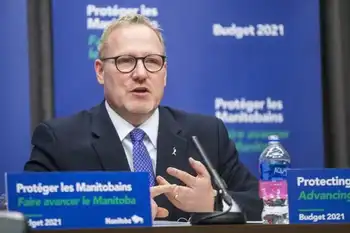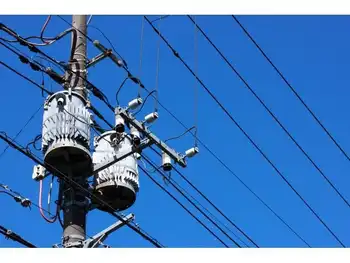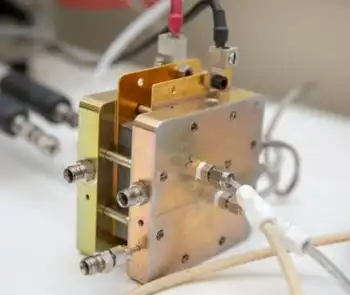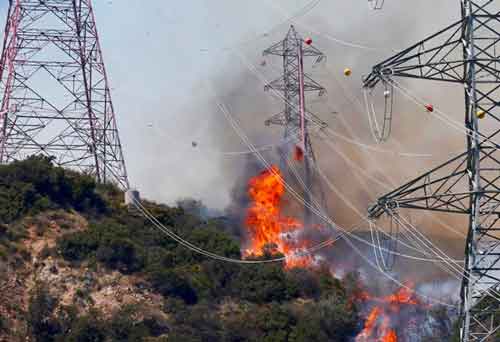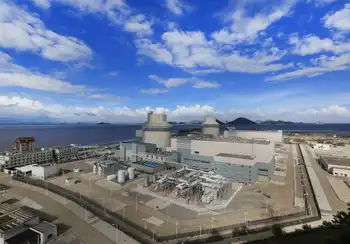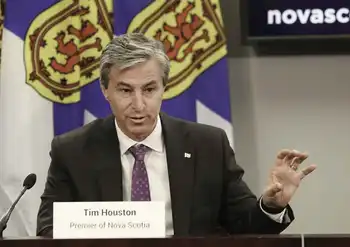Recession casting a shadow on solar power
By Globe and Mail
NFPA 70e Training
Our customized live online or in‑person group training can be delivered to your staff at your location.

- Live Online
- 6 hours Instructor-led
- Group Training Available
As they were preparing for the call, their Solon counterparts in Berlin – six hours ahead – shocked investors with the news that expected growth rates would fall by about half. The shares of Solon, the first solar-equipment company to list on the German stock market, closed down 18.3-per-cent, taking the decline to more than 75 per cent since January and not far above the 1998 initial public offering price.
In Toronto, Arise's already depressed shares slumped by 33 per cent, to close at 49 cents. The announcement of relatively minor technical problems at its new German photovoltaic (PV) factory, near Dresden, and lower-than-expected PV cell shipments in the second half of this year didn't help.
There is no longer any doubt: As far as investors are concerned, the sun has set on solar power, one of the hottest growth industries of the past decade.
“We are trading below book value even though we're quite pleased with what we've built,” said Arise founder and vice-chairman Ian MacLellan. “This market is numbing.”
Jim Buckee, the former CEO of Canada's Talisman Energy, thinks the clean-tech industry will revert to fringe status because it can't seem to thrive without government subsidies and because the wind doesn't always blow and the sun doesn't always shine, meaning the technologies can never fully replace coal, oil and nuclear plants.
“I think economic reality will kill the green industry,” said Mr. Buckee, who now lives in Britain and lectures on climate change.
Solar energy isn't alone in its woes. Wind, biomass, biofuel and other “clean-tech” companies are getting pasted too as the financial crisis sends investors fleeing from technology names, dries up credit and freezes the IPO market. The moribund equity markets are especially bad news for the green-energy players, who depend on a steady stream of equity from growth-obsessed investors to keep moving.
“We are very fast growing companies and we need a lot of financings,” said Therese Raatz, Solon's investor relations manager. “We can't turn to the capital markets now.”
The price collapse has been so brutal that industry and corporate finance executives predict a shake-out as some of the weaker clean-tech companies burn through precious cash. “Bankruptcies are a real risk,” said Brent Goldman, a corporate finance partner in London at BDO Stoy Hayward.
They have already started. Two weeks ago, VeraSun Energy, the second-biggest ethanol producer in the United States, filed for Chapter 11 bankruptcy protection. While no solar or wind company has gone under, failures are inevitable, Mr. Goldman and others said.
But the picture isn't entirely bleak. While the shredded share prices make comparisons to the bursting of the dot-com bubble in 2000 inevitable, some clean-tech newbies are still attracting venture-capital money, and the green agendas of president-elect Barack Obama and European Union governments offer some hope. But no one is willing to say the worst is over.
The clean-tech industry was propelled by soaring oil prices, the feel-good investment trend, Kyoto-inspired carbon-reduction efforts and a stream of government subsidies. Its growth has been phenomenal.
Take solar energy. The end product requires an expensive process that uses highly-refined silicon to make PV cells which, in turn, form part of the solar-module systems that generate electricity when the sun shines (Arise makes both silicon and PV cells; Solon buys Arise's cells to make the modules).
In the mid-1990s the solar industry was pretty much non-existent. But since 1996 or so, the compound annual industry growth has been 40 per cent. Last year PV cells collectively capable of generating 4 gigawatts (or 4 billion watts) of electricity were delivered. That's the equivalent of a couple of nuclear plants.
Solar-industry sales last year were about $30-billion (US) globally, up from $2-billion in 2000, Mr. MacLellan said. Wind power experienced even greater growth rates, though solar growth is now outpacing it. When you drive along the highways in Germany, which has created 250,000 alternative-energy jobs, you're almost never out of sight of a wind turbine. Solar- and wind-power sales are still climbing, though the growth curve is going from the near vertical to the gently sloping. The fear that companies will be incapable of raising money while the financial crisis persists has accelerated the investor exodus.
There are other problems. Ms. Raatz, of Solon, said falling government subsidies are rattling investors. Germany had been cutting its “feed-in” tariff – the highly inflated price it pays to generators of clean energy – by about 5 per cent a year. But a new law lifts the phase-out rate to 8 to 10 per cent a year. Spain, whose feed-in tariffs were more generous than Germany's, is also taking the axe to subsidies. “Spain's support led to enormous developments and they had the best (clean-tech) returns in the world,” she said.
Growth rates and project developments are now crumbling everywhere. Earlier this year, T. Boone Pickens, the Texas oilman turned green-energy guru, announced plans to build the world's biggest wind farm. He has since put the plans on hold because oil prices have declined by well more than half since their July peak of $147 a barrel.
Solon cut its growth forecast rate next year to about 25 per cent from 50 per cent. The prices of PV cells are expected to fall between 7 and 11 per cent next year and shares of almost all clean-tech companies are sinking. Vestas Wind Systems of Denmark is off two-thirds from its peak. The same is true of Gamesa, a Spanish wind turbine maker. The major solar companies have had similar declines, though Arise's fall – more than 80 per cent from its April high – has been harder than most.
Mr. Goldman, the BDO corporate finance partner, said the number of renewable energy initial public offerings on London's junior Alternative Investment Market (AIM) has fallen off a cliff. There has been exactly one – an Irish company called Kedco, in October – this year compared to 13 in 2007 and 21 the year before. The pace of mergers and acquisitions has also declined.
Mr. MacLellan and Mr. Goldman do not buy the doomsday scenario outlined by Mr. Buckee, the former Talisman chief. Mr. Obama has promised to “strategically invest” some $150-billion over 10 years to develop a clean-energy economy. The United Nations and governments in many developed countries are calling for “green deals” to reduce carbon dioxide output and create tech jobs. Germany's goal is to generate 20 per cent of its electricity from renewable energy sources by 2020 and it's already halfway there. “It's going through a hard time now, but clean tech will bounce back,” Mr. Goldman said.





